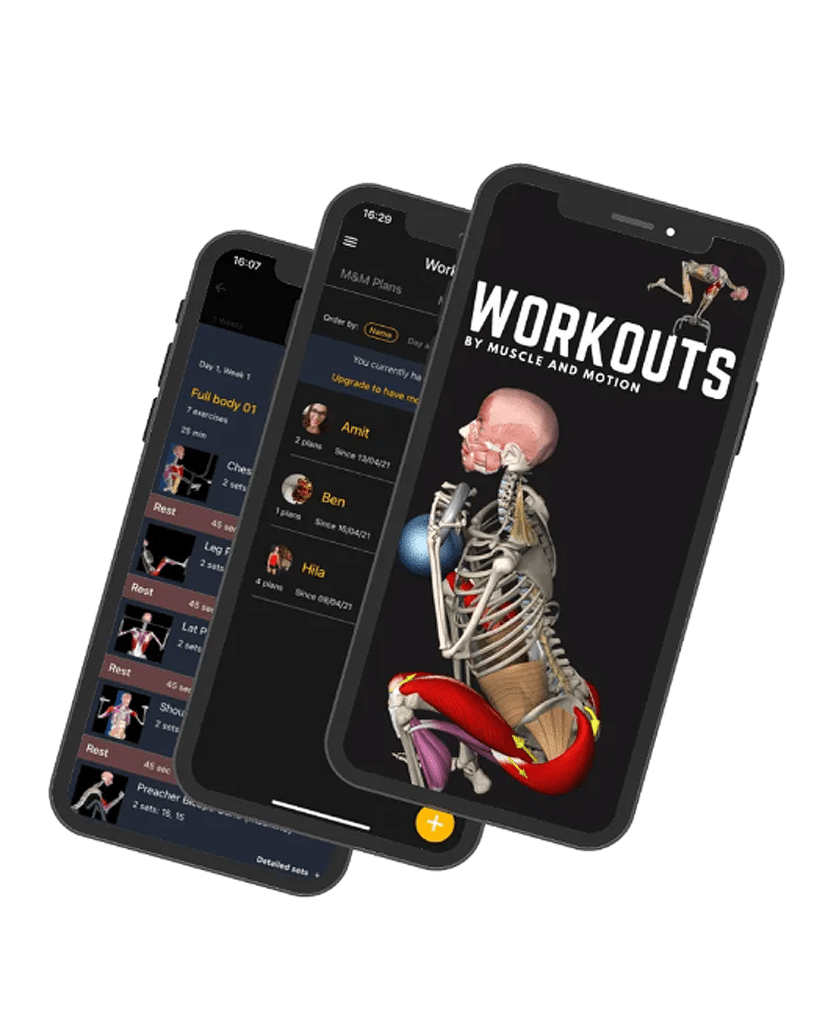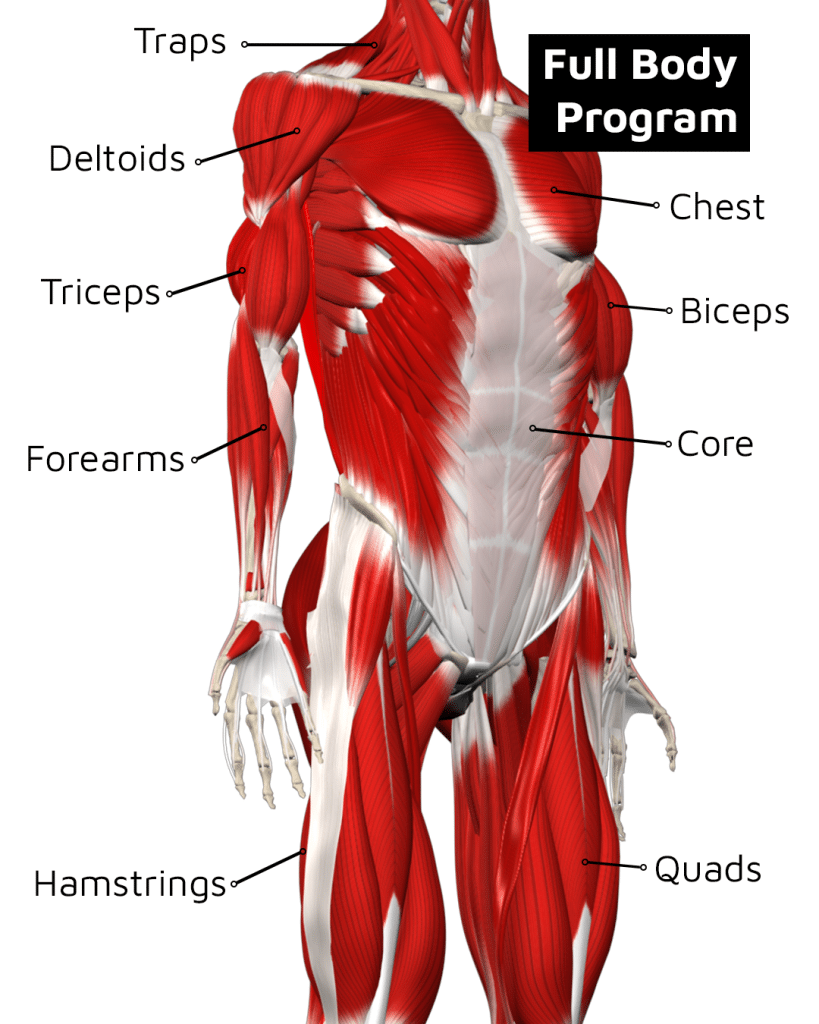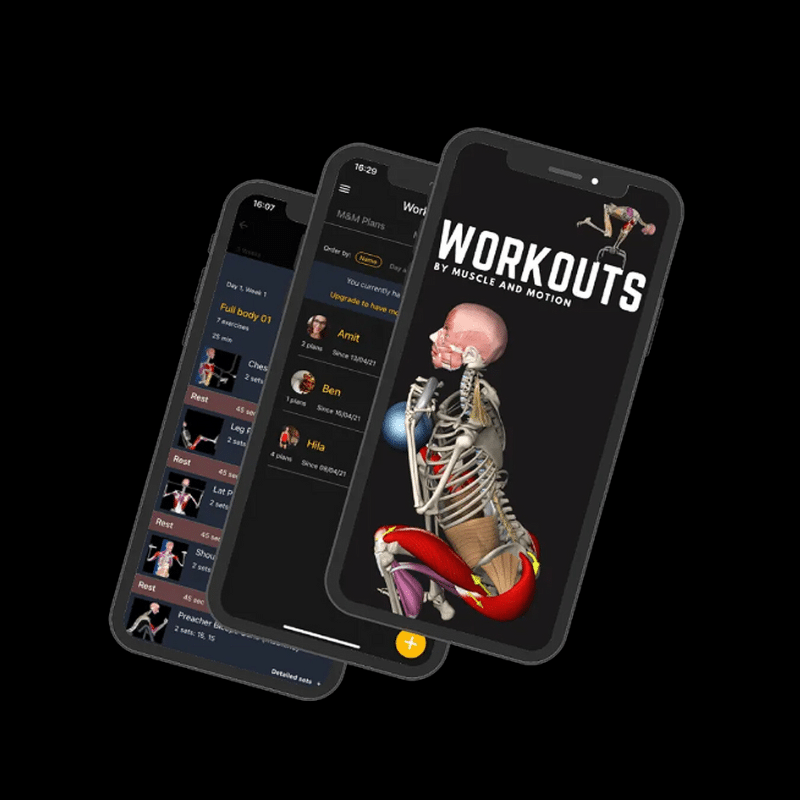Full-body Training Programs have gained immense popularity in the fitness world for their efficiency and effectiveness. These programs are typically tailored for beginners and individuals with limited time to dedicate to the gym. A well-structured program of this nature can benefit athletes of all levels. In this Muscle and Motion article, we’ll explore the benefits of full-body training and provide a comprehensive guide to creating your full-body workout plan.
To learn which other types of workout program methods are there, check out our article on this topic.

What is a full-body program?
A full-body program is a comprehensive fitness regimen that targets and engages all major muscle groups in a single workout session. Unlike split routines, where specific muscle groups are focused on different days, a full-body program incorporates exercises that work the upper body, lower body, and core.
A full-body program aims to provide a balanced and efficient approach to strength training and fitness, ensuring that all muscle groups are adequately trained and developed.
Typically, a full-body program is performed three times a week, with each muscle group being targeted with approximately 3 to 4 sets. In total, a single workout session in this program usually consists of around 15 to 20 sets.

Pros & cons of a full-body program
Not sure if this training program is for you?! Let’s go into detail and review the pros and cons of a full-body program.
Advantages of a full-body program:
✅ Efficiency: Full-body workouts are time-efficient because they target multiple muscle groups in one session, making them ideal for those with busy schedules.
✅ Frequency: With a full-body program, you can work on each muscle group more frequently throughout the week.
✅ Balanced development: It ensures balanced muscle development because all major muscle groups are trained regularly.
✅ Learning curve: Because this program is usually done with beginners, it is a great way to start learning the fundamental exercises (squat, bench press, etc.)
Disadvantages of a full-body program:
❌ Intensity: Full-body workouts can be physically demanding, and doing them too frequently without adequate rest can lead to overtraining and burnout.
❌ Time-consuming: While they are time-efficient, full-body workouts can still take longer than split routines, which may deter people with very limited time.
❌ Fatigue: Training all muscle groups in one session can lead to muscle fatigue, affecting your performance in later exercises.
❌ Recovery: Adequate rest and recovery are crucial, and some individuals may find it challenging to recover fully between frequent full-body sessions.
Which exercises should you use in a full-body program?
In a full-body program, the choice of exercises is critical. As previously mentioned, this type of program doesn’t involve many exercises, so you should prioritize compound exercises over isolation exercises to maximize your gains.
The rationale behind this is that compound exercises, which engage multiple muscle groups simultaneously, provide a more efficient way to work various muscles in a single movement since you’re doing fewer sets per muscle group.
This approach ensures you get the most out of your workout while keeping it concise and effective.
Here are some recommended exercises to consider:
- Barbell Squat: One of the most compound exercises for your lower body that engages your quads, hamstrings, glutes, and core.
- Barbell Deadlift: A compound exercise that works your entire posterior chain, including your lower back, glutes, and hamstrings.
- Barbell Bench Press: For your upper body, the bench press will target your chest, shoulder and triceps simultaneously.
- Dumbbell Shoulder Press: This exercise primarily targets your shoulder muscles. Simultaneously, it engages your triceps and scapula muscles while also involving your core muscles for stability.
- Bent-over Row: This exercise primarily targets your shoulder extensor muscles. However, it also demands significant effort from your entire posterior chain muscles as they work hard to stabilize your body during the exercise.
- Pull-ups: This exercise primarily targets your back muscles, specifically the lats, but also engages your biceps and shoulders.
- Lunges: Lunges are an outstanding lower body exercises targeting your quadriceps, hamstrings, and glutes. Lunges are a great way to build leg strength, and improve lower body coordination and balance.
- Dips: Dips are excellent exercises for the upper body, particularly the triceps, shoulders, and chest. This compound exercise engages multiple muscle groups at once, offering comprehensive upper-body exercise. Dips require considerable effort from your upper body while also encouraging core stability.
This exercise list offer a glimpse of the options available for designing a comprehensive full-body program.
To access a broader range of exercises, be sure to explore our Strength Training App. The app will provide you with high-quality information on strength exercises, physiology, and anatomy, helping you maximize your progress and reach your full potential. Let us be your guide on this incredible fitness journey.
We at Muscle and Motion have taken on the challenge of providing you with the necessary theoretical background and outlining a comprehensive yet beginner-friendly gym workout plan focused on resistance training. Our goal is to give you a solid foundation, ample room for practice and experimentation, and a better understanding of effective gym workouts.
At Muscle and Motion, we believe that knowledge is power, and understanding the ‘why’ behind any exercise is essential for your long-term success.
Let the Strength Training App help you achieve your goals! Sign up for free.


